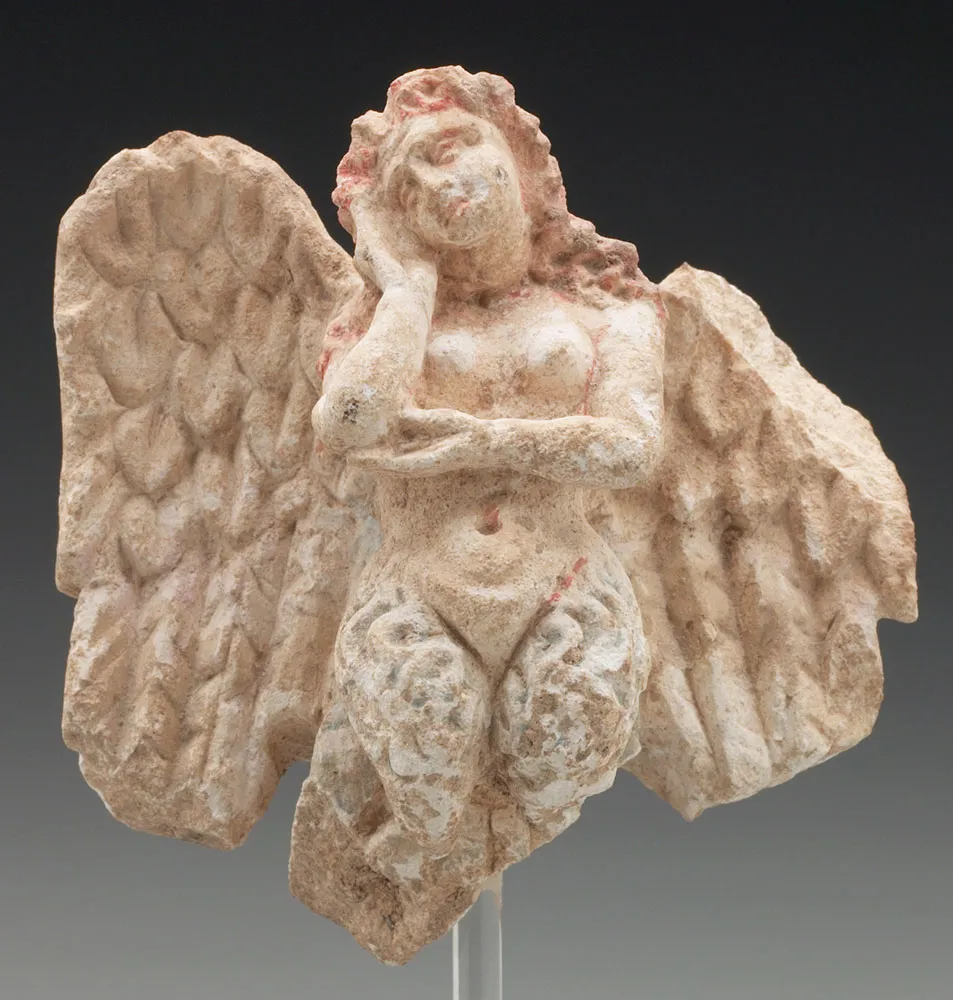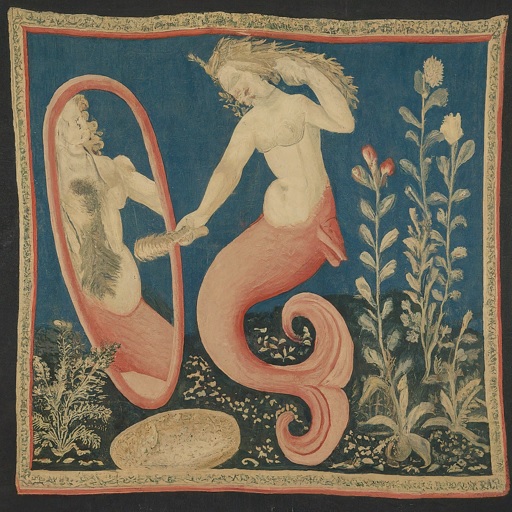From the depths of the ancient seas to the pages of classical literature, the legend of sirens has captivated human imagination for millennia. These enigmatic beings, often depicted as part woman and part bird or fish, have been the subject of countless tales and artistic depictions. The question that continues to intrigue scholars and enthusiasts alike is: Are sirens real?
Sirens first appeared in ancient Greek mythology, where they were described as dangerous creatures who lured sailors to their doom with their enchanting music and voices. Homer’s “Odyssey” provides one of the most famous accounts, where Odysseus, forewarned of their beguiling song, has his men plug their ears with beeswax and ties himself to the mast to safely sail past their island. This vivid imagery has cemented sirens in our collective consciousness as symbols of temptation and peril.
Yet, the allure of sirens extends beyond their mythological roots. Throughout history, their image has evolved, influenced by various cultures and artistic interpretations. In medieval Europe, sirens were often depicted as mermaid-like creatures, combining elements of beauty and danger. This transformation from bird-women to mermaids highlights the fluidity of myth and its adaptation over time.
The enduring fascination with sirens raises numerous questions. Are sirens real in any form beyond myth? What inspired these ancient stories? While modern science dismisses the literal existence of sirens, some speculate that these legends may have been inspired by real sea creatures or natural phenomena misinterpreted by ancient mariners.
In this article, we will delve into the rich history and cultural significance of sirens, exploring their origins, how they have been depicted through the ages, and the reasons behind their lethal allure. By examining both historical texts and modern interpretations, we aim to uncover the truth behind the siren’s song and why these mythical beings continue to captivate our imaginations.
What Are Sirens? Origins and Mythological Background
Sirens, with their haunting melodies and captivating allure, have long been a fixture in the annals of mythology and legend. But what are sirens, and where do these myths originate? The roots of siren mythology can be traced back to ancient Greece, where they were first described as part woman and part bird, singing enchanting songs that led sailors to their demise.

In Greek mythology, sirens were the daughters of the river god Achelous and a Muse, often associated with the underworld due to their connection to death. The most well-known account comes from Homer’s “Odyssey,” where Odysseus encounters these dangerous creatures. Forewarned by the sorceress Circe, Odysseus orders his crew to plug their ears with beeswax and has himself tied to the ship’s mast so he can hear the sirens’ song without succumbing to their lure. This tale underscores the perilous beauty of sirens, blending seduction with a deadly trap.
While Greek mythology provides the foundational image of sirens, other cultures have contributed to their mystique. In Roman lore, sirens were similarly depicted as bird-women, often found on rocky coastlines, luring sailors to shipwreck with their voices. The image of sirens evolved significantly during the Middle Ages in Europe, where they were often conflated with mermaids. These medieval sirens, depicted as beautiful women with fish tails, represented both the allure and danger of the sea.
Beyond Europe, siren-like creatures appear in various other mythologies. In Philippine folklore, for example, the Sirena is a mermaid-like entity known for her beautiful voice, which she uses to enchant fishermen. These tales, while diverse, share a common theme: the irresistible yet perilous call of the siren, symbolizing the thin line between desire and destruction.
Are sirens real? While there is no scientific evidence to support the existence of these mythical beings, their stories might have been inspired by real phenomena. Ancient sailors, unfamiliar with the sounds and sights of the open ocean, could have misinterpreted natural occurrences as supernatural. Manatees and dugongs, for example, are believed by some to have contributed to mermaid and siren myths due to their human-like features when seen from a distance.
The siren’s enduring legacy in mythology underscores their powerful symbolism. They embody the danger of temptation, the unknown depths of the sea, and the eternal human fascination with the mysteries of nature. By understanding the origins and evolution of siren myths, we gain insight into the ancient world and the timeless stories that continue to captivate us.
Frequently Asked Questions (FAQs)
1. Are sirens real?
Sirens, as depicted in mythology, are mythical beings with origins in ancient Greek literature. While they do not exist in the literal sense, their legends continue to captivate human imagination.
2. What inspired the ancient stories of sirens?
Ancient stories of sirens may have been inspired by natural phenomena such as marine animals or the sounds of the sea, interpreted through the lens of myth and folklore.
3. How have sirens been portrayed throughout history?
Throughout history, sirens have been depicted in various forms, from bird-women in ancient Greece to mermaid-like creatures in medieval Europe, reflecting cultural interpretations and adaptations.
4. Why do sirens continue to fascinate people today?
Sirens continue to fascinate people due to their symbolic significance of temptation, danger, and the mysteries of the sea, perpetuated through literature, art, and modern media.
5. What is the cultural impact of sirens?
The cultural impact of sirens spans from ancient mythology to contemporary references, influencing art, literature, and popular culture, and prompting discussions about myth, reality, and symbolism.
Sirens in Ancient Texts: Literary Depictions and Interpretations
Sirens have been an enduring element of classical literature, their presence adding layers of intrigue and danger to ancient narratives. The most renowned portrayal of sirens comes from Homer’s “Odyssey,” a cornerstone of Greek literature. In this epic, sirens are depicted as seductresses who use their enchanting voices to lure sailors to their doom. This portrayal has profoundly shaped our modern understanding of these mythical beings, blending the allure of beauty with the peril of temptation.
In “The Odyssey,” Odysseus’s encounter with the sirens is one of the most memorable episodes. Warned by the sorceress Circe about the danger they pose, Odysseus instructs his crew to fill their ears with beeswax and has himself bound to the mast of his ship. As they sail past the sirens’ island, their melodious song reaches Odysseus, promising him knowledge and pleasure. Despite his desperate pleas to be released, his crew, following his earlier orders, keeps him restrained until they are safely out of earshot. This scene underscores the irresistible nature of the sirens’ call and the lengths to which one must go to avoid their deadly trap.

The vivid description of the sirens’ song and the peril it brings has left a lasting impact on literature and art. Their depiction as beautiful yet dangerous creatures has become a timeless symbol of temptation. In later Roman literature, such as in the works of Ovid, sirens retain their beguiling characteristics, often appearing as part bird and part woman, perched on rocky cliffs, waiting for unsuspecting sailors.
These classical depictions have influenced various interpretations and adaptations over centuries. During the Middle Ages, sirens began to be depicted as mermaids, blending their characteristics with those of sea nymphs. This evolution in their portrayal reflects the adaptability of myths, merging with local legends and beliefs. The question, “Are sirens real?” often arises when exploring these texts. While these literary sources are mythological, they provide a rich tapestry of human fears and desires projected onto the unknown sea.
In modern literature and popular culture, sirens continue to captivate audiences. They appear in novels, films, and even music, often embodying the dual nature of allure and danger. By examining their portrayal in ancient texts, we gain insight into the human psyche and our perennial fascination with the mysterious and the forbidden.
What Do Sirens Look Like? Artistic Representations Through the Ages
Sirens have captured the imagination of artists and writers for centuries, their visual representations evolving significantly over time. These depictions have helped shape our collective understanding of these mythical beings. But what do sirens look like, and how has their appearance changed from ancient times to the present? Are sirens real, or are they merely figments of artistic imagination? By examining their portrayal in art and literature, we can trace the fascinating evolution of sirens through the ages.

In ancient Greek art, sirens were often depicted as hybrid creatures, part woman and part bird. They typically had the body of a bird with the head and chest of a woman, symbolizing their dual nature as both beautiful and dangerous. This imagery is evident in numerous Greek vases and sculptures, where sirens are shown perched on rocks or trees, singing their enchanting songs to lure sailors to their doom.
As the legend of sirens spread and merged with other cultural myths, their appearance began to change. In Roman art, sirens retained their bird-like characteristics but were sometimes depicted with more human features, emphasizing their seductive nature. This period marked the beginning of the sirens’ transformation from bird-women to more human-like forms.
During the Middle Ages in Europe, the image of the siren underwent a significant transformation. Influenced by local folklore and the merging of different mythologies, sirens began to be depicted as mermaids—creatures with the upper body of a woman and the lower body of a fish. This shift is evident in medieval manuscripts, tapestries, and carvings, where mermaid-sirens are often shown combing their hair or holding a mirror, emphasizing their beauty and allure.
The Renaissance period further solidified the mermaid image of sirens. Artists like John William Waterhouse and Gustav Klimt created iconic paintings that portrayed sirens as ethereal, otherworldly beings, often in aquatic settings. These artistic interpretations highlighted the sirens’ connection to the sea and their seductive charm.
In contemporary culture, the depiction of sirens continues to evolve. Modern literature, film, and art often portray sirens as alluring and mysterious mermaids, maintaining the balance between beauty and danger. Their depiction in media such as Disney’s “The Little Mermaid” and various fantasy novels has cemented the mermaid image in popular imagination.
Are sirens real? While their physical existence remains in the realm of mythology, the visual evolution of sirens reflects humanity’s fascination with the unknown and the alluring danger of the sea. Their ever-changing appearance in art and literature underscores the timeless nature of their myth and our enduring curiosity about these enigmatic beings.
Why Do Sirens Kill Sailors? The Symbolism Behind the Myth
The myth of sirens luring sailors to their doom is one of the most enduring and intriguing legends in mythology. But why do sirens kill sailors? The stories are rich with symbolic meanings that have fascinated historians and mythologists for centuries. By delving into these interpretations, we can understand the deeper reasons why these tales emerged and persisted.
At their core, sirens represent the dangerous allure of the unknown. In ancient times, the sea was a vast, mysterious expanse, filled with peril and wonder. Sailors embarking on long voyages faced numerous risks, from treacherous weather to hidden reefs. The sirens’ song, promising beauty and knowledge, symbolizes the irresistible call of the sea itself, a call that could lead to both discovery and destruction. The question “Are sirens real?” may stem from sailors’ real encounters with the sea’s unpredictable and often deadly nature.

Mythologists suggest that sirens also embody the concept of temptation and the consequences of succumbing to it. Their enchanting voices and captivating beauty represent desires and distractions that can lead one astray from their path or duties. This theme is universal, resonating with human experiences across cultures and eras. The sirens’ deadly embrace serves as a cautionary tale about the dangers of giving in to temptation and losing oneself to destructive desires.
Historians and scholars have also interpreted the siren myth through a psychological lens. The sirens’ ability to lure sailors to their deaths can be seen as a metaphor for the human struggle with inner demons and the battle between reason and instinct. The sailors’ fatal attraction to the sirens’ song reflects the tension between the conscious mind and the unconscious desires that lie beneath the surface. This interpretation highlights the sirens as symbols of the inner turmoil that can lead to self-destruction if not properly navigated.
The persistence of siren myths can also be attributed to their role in reinforcing societal norms and values. In many ancient cultures, the tales of sirens served to warn against the dangers of overindulgence and the importance of self-control. By depicting the fatal consequences of falling for the sirens’ charm, these stories reinforced the virtues of discipline and vigilance, essential qualities for survival in a harsh and unpredictable world.
In modern times, the symbolic meanings of sirens continue to captivate and inspire. They appear in various forms of media, from literature and art to films and music, often embodying the timeless themes of temptation, danger, and the unknown. While the literal question “Are sirens real?” is answered by their mythical origins, their symbolic significance remains deeply embedded in our cultural consciousness.
Sirens in the Ocean: Modern Legends and Cultural Impact
The ocean, vast and mysterious, has always been a fertile ground for myths and legends. While ancient tales of sirens luring sailors to their doom are well-documented, contemporary accounts of sirens or similar mythical creatures continue to emerge, keeping the age-old question alive: Are sirens real? These modern legends, although often dismissed as fantasy, offer a fascinating glimpse into how these mythical beings continue to capture our imagination and reflect our cultural fears and desires.
In recent years, there have been various reports and sightings of mermaid-like creatures across the globe. These accounts, often shared through social media and local news outlets, range from fishermen in the Caribbean claiming to have seen mermaids swimming near their boats to tourists in coastal regions reporting strange, alluring songs emanating from the sea. While skeptics attribute these sightings to misidentified marine animals or optical illusions, the allure of the siren myth persists, fueled by our fascination with the unknown depths of the ocean.

Modern legends of sirens often echo the themes found in ancient myths but with contemporary twists. For instance, some stories depict sirens as protectors of the sea, warning humans against pollution and overfishing, thereby linking the ancient myth to modern environmental concerns. These narratives present sirens not just as temptresses but as guardians of nature, reflecting a shift in how we perceive our relationship with the ocean. Likewise, similar stories of Are Giants Real emerge in modern times, often portraying them as protectors of the environment or wise, reclusive beings rather than just monstrous threats.
The cultural impact of sirens is also evident in popular media. Films, television shows, and literature continue to feature siren-like characters, blending ancient myth with modern storytelling. Movies like “Pirates of the Caribbean: On Stranger Tides” and TV series like “Siren” explore the dual nature of these creatures, highlighting their beauty and danger while delving into their mysterious origins. These contemporary depictions keep the legend alive, inviting new generations to ponder: Are sirens real, or are they merely figments of our collective imagination?
Despite the lack of scientific evidence supporting the existence of sirens, their enduring presence in modern legends speaks to a deep-seated human fascination with the ocean and its mysteries. The persistence of these stories suggests that sirens fulfill a psychological and cultural need, symbolizing the unknown and the dangers that come with exploring uncharted territories. They remind us of the thin line between reality and myth, and how easily one can slip into the other when faced with the vast, enigmatic sea.
In conclusion, while we may never definitively answer the question, “Are sirens real?” the continued sightings and cultural impact of these mythical beings show that they remain a powerful symbol in our collective psyche. They embody our fears, hopes, and the eternal allure of the ocean’s mysteries, ensuring that the legend of the siren will continue to enchant and intrigue for generations to come.
The Siren’s Song: Why Dogs Howl at Sirens and Other Modern Connections
The haunting wail of a siren often provokes an unexpected response: dogs howling in unison. This phenomenon has intrigued pet owners and scientists alike, leading to various interpretations and studies. While ancient myths have depicted sirens as beings whose songs could mesmerize humans, modern observations show that these “sirens” still have a compelling influence, albeit on our canine companions. Are sirens real in a different sense? Let’s explore why dogs howl at sirens and other contemporary connections to this enduring legend.

Dogs’ reactions to sirens can be traced back to their wolf ancestry. Wolves howl to communicate over long distances, signaling their location, calling the pack, or marking territory. Similarly, when dogs hear sirens, they might instinctively respond to these high-pitched sounds, mistaking them for the howls of other dogs or wolves. This behavior is rooted in their natural communication methods, suggesting that, in a way, dogs perceive sirens as the modern equivalent of a distant call.
Scientific explanations support this instinctual response. Sirens emit sound frequencies that fall within the range dogs can hear, often between 40 Hz and 60,000 Hz, while humans can typically hear up to about 20,000 Hz. The higher frequencies and the varying pitches of sirens can stimulate dogs’ auditory senses, prompting them to howl as a form of communication or a response to what they perceive as another dog’s call.
Anecdotal evidence also provides insight into this behavior. Many dog owners observe that their pets start howling when they hear sirens, even if they are indoors. Some theories suggest that dogs might howl to alert their human family members to the “danger” they associate with the sound. Others believe that the howling is a form of social bonding, as dogs might think they are participating in a communal activity with other canines.
The influence of sirens in modern culture extends beyond their impact on dogs. The enduring question, “Are sirens real?” takes on new meaning as sirens, both mythical and mechanical, continue to capture our attention. The fascination with sirens in myth is mirrored in the modern world through emergency sirens that evoke a sense of urgency and response. This parallel draws an interesting connection between ancient lore and contemporary life, highlighting how the symbolic power of the siren’s call remains relevant.
In conclusion, while the mythical sirens of ancient tales might not be real, their influence persists in unexpected ways. Dogs howling at sirens showcase an intriguing blend of instinct and adaptation, reflecting both their ancient heritage and their ability to navigate modern environments. These behaviors remind us of the enduring nature of myths and their ability to manifest in the world around us, bridging the gap between the legendary and the real.






